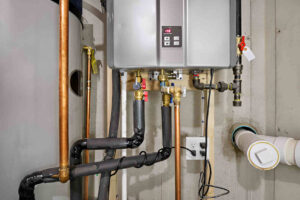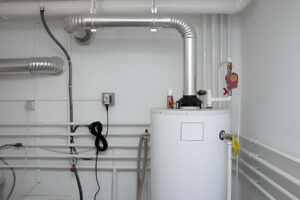How to Flush Tankless Water Heater for Efficiency
It’s just as important to take care of your water heater as buying the right one. You already know how much more efficient a tankless unit is than a regular spring if you have one. Even the most advanced types can lose their power if they are not taken care of properly. That’s why you need a tankless water heater flush.
Flushing your system regularly not only makes sure that you always have clean, hot water, but it also makes it last longer. This guide will teach you why cleaning is essential, how often to do it, and how to do it step by step.
Why Flushing a Tankless Water Heater is Important
Some minerals, like calcium and magnesium, build up inside your tankless heater over time. This process is called scaling, and it can
- Reduce heating efficiency
- Block water flow
- Increase energy consumption
- Shorten the lifespan of the unit
It’s even more critical to flush if you live in a place with hard water. How does a hot water geyser work? It explains how geysers generally work, but tankless systems need extra care because they are always running.

How Often Should You Flush a Tankless Water Heater?
At least once a year, experts say, you should flush your unit. But in places with tough water, cleaning every six months can keep expensive damage from happening.
This is like the general maintenance you’d think about when looking at water geyser parts fixing something is always cheaper than buying a new one.
Tools You’ll Need for Tankless Water Heater Cleaning
Before you start to clean, get the following things ready:
- Deep-well pump
- White vinegar or a mix for removing scale
- Two five-gallons buckets
- Hoses that work with your heater
- Wide-range wrench
- Safety glasses and gloves
These tools will also be helpful for regular repair jobs like the ones in electric geyser tips.
How to Flush a Tankless Water Heater
1. Turn Off the Heater
If there is a gas valve, turn off the power and close it. First and foremost, safety should always come first.
2. Shut Off Water Supply
To separate the heater, turn off the lines that bring in hot and cold water.
3. Attach Hoses
Hook up one hose to the valve separating hot and cold water, and the other to the valve separating the two. Put each end in its own bucket.
4. Add Vinegar Solution
One bucket should hold four gallons of white vinegar. This is a healthy way to get rid of scales.
5. Run the Pump
Run the vinegar through the heater for 45 minutes with the pump in the bucket.
6. Rinse with Fresh Water
It will be clean after ten minutes of pumping clean water through the machine.
7. Reconnect and Test
Turn the gas or power back on after you’ve opened the water faucets and removed the lines. Turn on the hot water tap to make sure everything is okay.
When you clean this way, things work better, and problems are stopped before they get worse. This can save you money on fixes like replacing a water heater before it breaks.

Common Mistakes to Avoid
- Skipping regular flushing: Makes scales build up.
- Using harsh chemicals: Not good to use; vinegar is better.
- Not rinsing properly: Leaves a picture.
- DIY without knowledge: Call a professional if you’re not sure. This will keep the inside from getting destroyed.
Many people also choose trim options like a mini geyser for kitchen use over tankless units for small spaces like kitchens.
Benefits of Regular Tankless Water Heater Flushing
- More efficient energy use
- The water level stays the same.
- Heater that lasts longer
- Having better water
- Repair costs went down.
These benefits show the importance of being careful, as shown in books like “Instant Geyser Safety” and “Horizontal Geyser Installation.”
Cost of Professional Tankless Water Heater Flush
Having a professional flush your toilet usually costs between $150 and $300. It might be cheaper to do it yourself, but hiring a cleaner is better. Building a new system costs a lot more. You can read more about this in the geyser prices list and electric & gas geyser prices in Pakistan.
Conclusion
A tankless water heater flush does more than just clean the water. That money will be used to improve safety, economy, and happiness. If you flush your system once a year, you can keep your hot water going. You can escape paying for and save money on your energy bills.
If you want to find an option, you could look into a portable water heater for short-term use or learn how to flush a water heater for a regular tank type.
FAQs Section
Q1: How often should I flush my water heater that doesn’t hold water?
At least once a year, you should flush your tankless water heater. In places with hard water, it’s best to do it every six months to keep scale from building up.
Q2: What will happen to my portable water heater if I don’t flush it?
Mineral layers, lower efficiency, higher energy bills, and possibly damage to the heat exchanger can happen if you don’t clean it regularly.
Q3: Can I flush my own tankless water heater?
You can flush your own toilet if you have a pump, lines, and white vinegar or a descaling product. But if you’re not sure, getting a professional will make sure the cleaning is safe and done right.
Q4: How long does it take to clean a tankless water heater?
It can take anywhere from one to two hours, based on how bad your system is and whether you do it yourself or hire a professional.
Q5: What tools do I need to flush a tankless water heater?
One of the most basic things you will need is a mechanical pump, lines, a bucket, and a solution for the scale. Some water heaters come with service valves as well as cleaning valves.